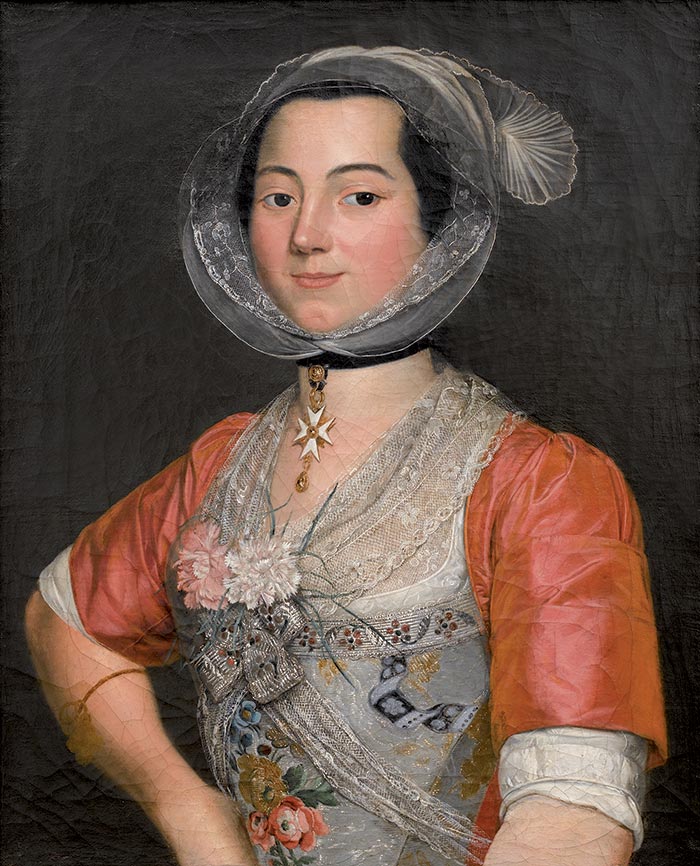Jewelers routes
28 July 2017
Share
Musée Provençal du Costume et du Bijou
After alterations lasting several months, this family-run museum dedicated to 18th and 19th century fashion now features twenty-odd truly magnificent jewelry pieces as well.
Housed in the Clapier-Cabris private mansion in the center of Grasse, this enchanting museum is managed by Agnès and Françoise Costa (who also run the Fragonard Company). Their mother, Hélène Costa, created it precisely twenty years ago to exhibit the Provençal costumes she had collected over many years, crisscrossing the region in search of fine textile pieces. They include quilted skirts, high-waisted tight-sleeved camisoles, bodices, dresses, capes and printed fichus – which she herself would wear during traditional festivals. She also acquired some typical and highly touching jewelry.
The art of adornment in Provence
From the second half of the 18th century onwards, regional jewelry became widespread in Provence far sooner than in other provinces, thanks to the region’s prosperity, which it largely owed to the printed calico trade carried out through the thriving free port of Marseille. Arles was considered the city with the last word in stylishness and elegance, as seen in the paintings of Antoine Raspal. Stagecoach travelers told tales of the “Arlésiennes” (the women of Arles) who “adorned their arms with gold rings like the bracelets of ancient Roman women, and wore long crosses in the same metal on their bosoms, embellished in various ways, and always enriched with an enamel star” or “whose vanity ruined many a family who had the temerity to spend over 100 louis on a diamond cross.” (See Bijoux des régions de France by Claudette Joannis).
Clothing jewelry
At the entrance to the jewelry room, visitors can admire some impressive craftsmanship in a lavish wall display of cape clasps and belt buckles in silver or iron, with chased or cut-out decorations of shells, flowers and escutcheons. “These are reminiscent of ex-votos found in Provençal churches,” says art historian Clément Trouche, a specialist in traditional Arles costumes. “They betray the Oriental influence that developed with the maritime trade.” You will also find a series of “claviers”: hooks holding a double chain ending in two S’s. Inspired by the more aristocratic chatelaine or belt clip (the museum features one in enamel), they were attached to the skirt belt and were designed to hold scissors, small cupboard keys and sewing kits.
Crosses
In Catholic Provence, all women – peasants, craftworkers and aristocrats alike – wore a cross on a silk or black velvet ribbon high up on the neck. The showcases contain a dozen of these, illustrating the wide variety of materials, forms, sizes and techniques, as though echoing the fabrics, colors and pleats of the costumes. They include a “Dévote”, a “Maintenon”, a “Capucine” (with a sliding loop in the form of a St Andrew’s cross), an articulated “Butterfly” and three “Maltese”, the most famous type. The eight-pointed cross in black and white enamel is a variant on the insignia of the Knights of Malta, who came to Arles in the 12th century.
“Poissarde” earrings
When the fashion for wimples died out, Provençal women began wearing earrings, including the “poissardes” displayed in the museum. This colorful term (literally “fishwife”) describes the models worn by women fishmongers at the market in Marseille. An oval version of the Creole, or hoop earring, which could be extraordinarily large, they are recognizable from their frontal S-shaped crosspiece and finely-worked enamel decoration, ornamented with coral beads or diamonds, if their wearers were wealthy.
The coulas: a typically Provençal jewelry item
A descendant of the ancient torque, this extremely simple gold bangle is Provence’s most iconic piece of jewelry, found nowhere else in France – unlike the cross. Worn by all the women of Arles except the aristocracy, it was embellished with a Maltese cross (as illustrated by Antoine Raspal‘s painting L’Arlésienne aux œillets), or a medallion with incised motifs. “The Musée Provençal du Costume et du Bijou has one of only two extant coulas, the other being in the Musée Réattu d’Arles,” says Clément Trouche. Included in the marriage dowry as a cash reserve, it could be melted down if the need arose.
2, rue Jean Ossola 06130 Grasse – Free entry, open daily from 10 am to 6 pm.
Related article:























